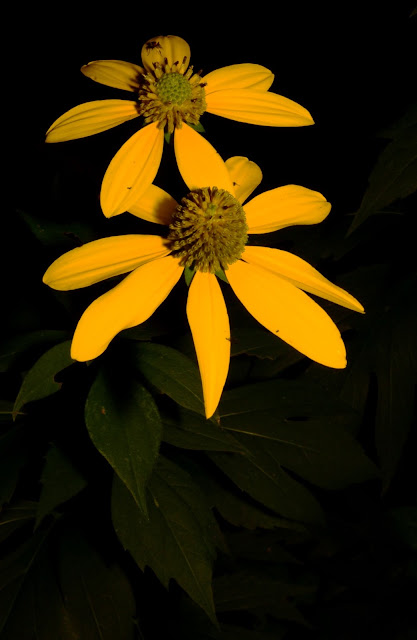In early July, I joined Rich Dunbar and Roger Hedge in a search for one of Indiana's most diminutive and inconspicuous orchids, Malaxis unifolia. We were at a known site for the species, but it hadn't been seen there in many years, and we didn't have good location or population size information. For the first few hours of our visit, we searched unsuccessfully, making us begin to wonder if it was no longer present at this site.
Then, by some small miracle, I spotted a tiny sterile leaf on a mossy hummock that I was convinced was Malaxis unifolia. This led us to find several plants in the first of a few populations of Malaxis that we found that day.
I'd seen this little green-flowered orchid before in Wisconsin, but I had forgotten just how small it was. The Drosera rotundifolia leaves in the first photograph above give an idea of scale. Given the size and flower color, how many individuals were there that we didn't find?
Malaxis unifolia is known from the eastern half of North America, but it is most frequent in the upper Great Lakes region and in New England. It is considered a species of conservation concern in six states. Habitat includes swamps, bogs, and in much drier conditions in heathlands, sand barrens, and open upland woods. This is another species that seems to be more reliant on soil chemistry than soil moisture.






